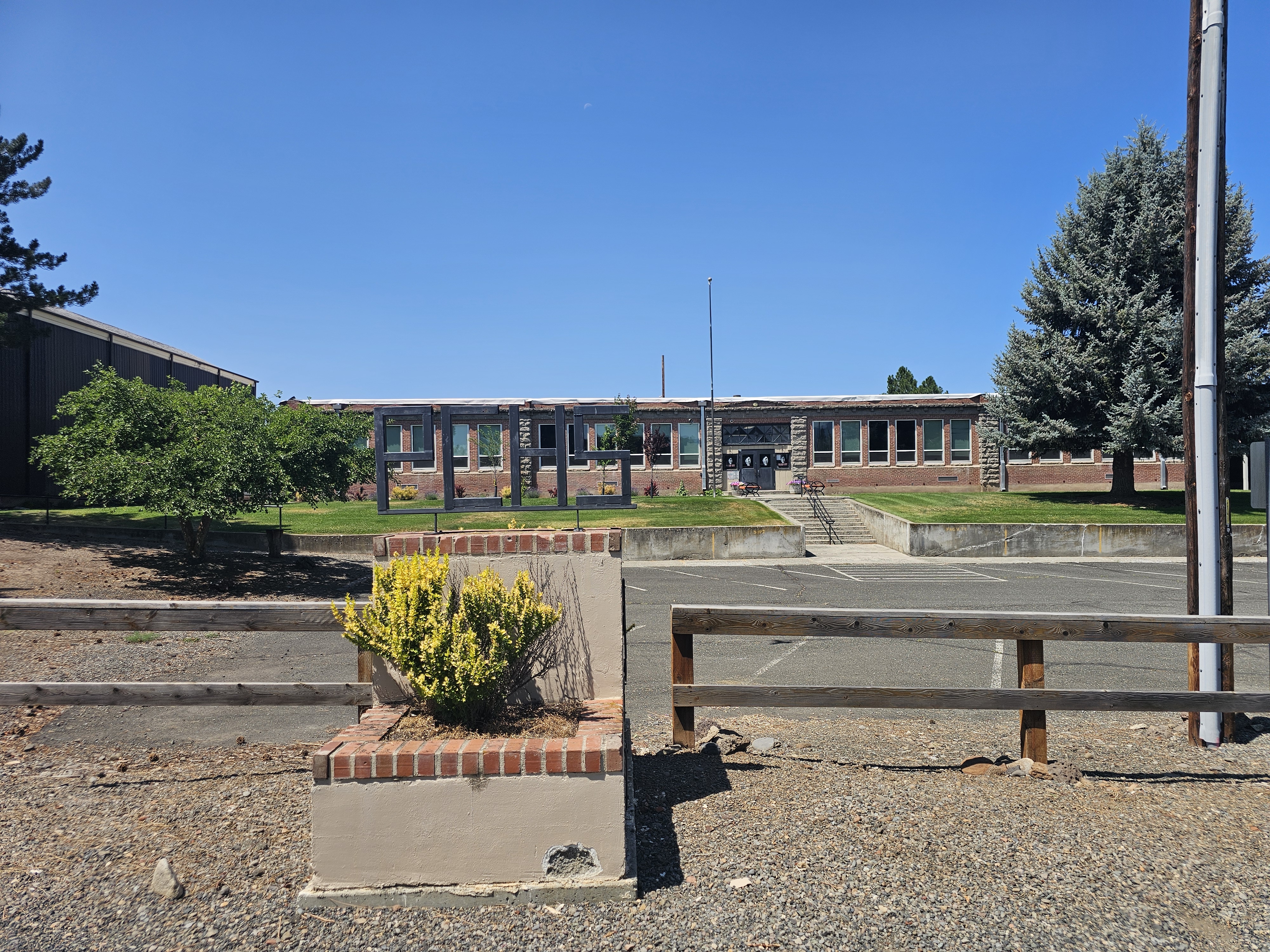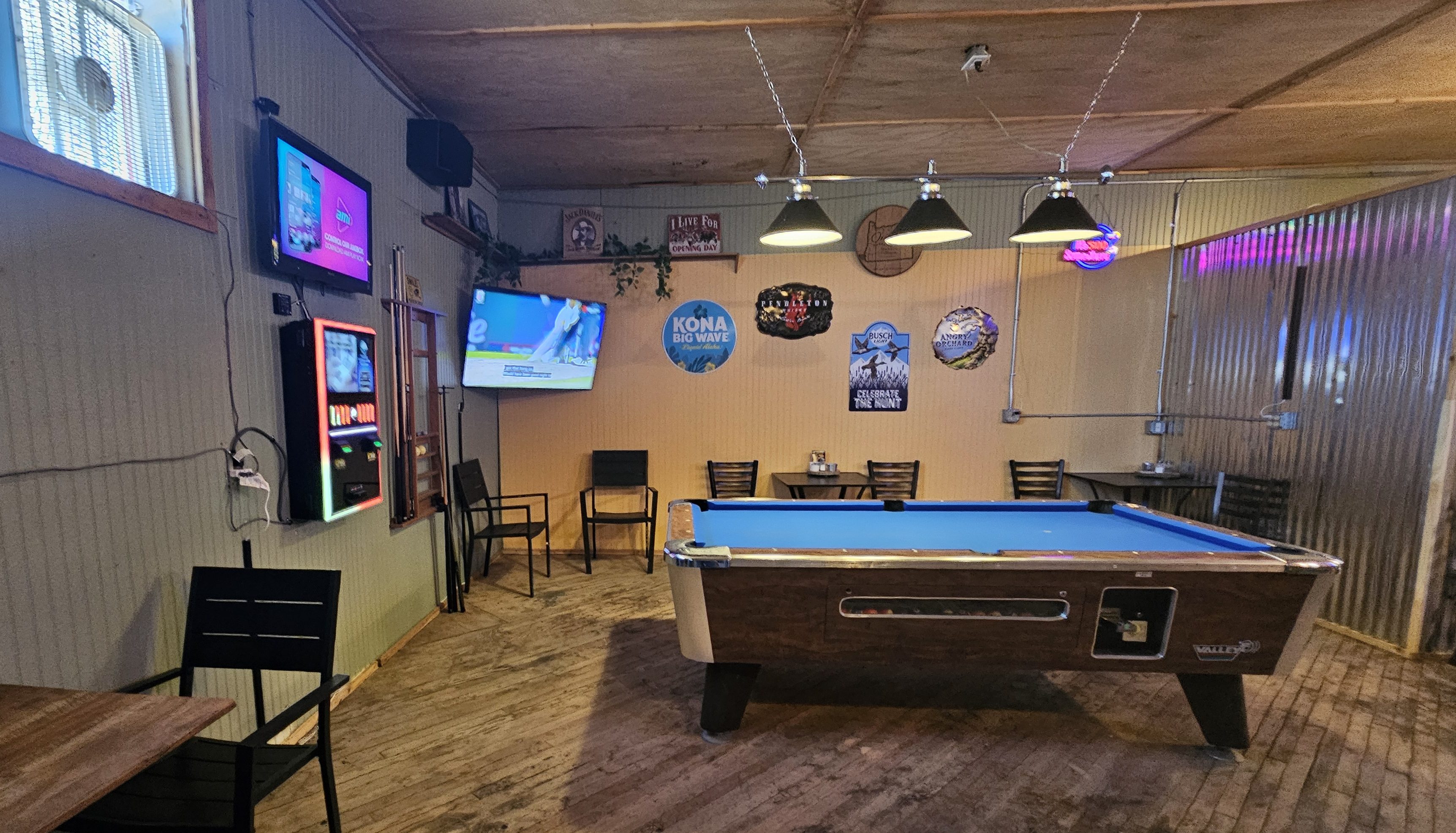Out and About: Exploring Northeastern Oregon’s varied mining history
Published 3:00 pm Monday, June 24, 2024

- Jacoby
I spent the last weekend of spring pondering a distant past when gold played a prominent role in Northeastern Oregon’s economy.
Trending
I kicked a few bricks.
I examined rust-crusted pieces of metal whose purpose I could not readily discern but which, I am certain, were once capable of bursting eardrums and causing even more grievous damage to the limbs and other vital parts of unwary miners.
I listened to the west wind set the conifers to moaning, the predominant sound in such places with the miners long since gone, and their devices silenced for decades.
Trending
The region’s gold rush started on Oct. 23, 1861.
That’s the day Henry Griffin saw the telltale pale color in the bottom of his pan as he knelt beside a minor gulch just southwest of the Powder River Valley.
Eleven months later the Oregon Legislature carved a new county out of Wasco, which then sprawled across the whole of the new state (itself less than three years old) east of the Cascades.
The new county was called Baker, after Col. Edward Dickinson Baker, a U.S. senator from Oregon who was killed in combat at the Civil War Battle of Ball’s Bluff.
For the next five decades or so, the northeast corner of Oregon produced most of the state’s gold and other precious metals.
Hundreds of mines, the greater share in Baker and Grant counties, yielded tens of millions of dollars’ worth — and that at a time when the federal government set the price of gold at $20.67 per ounce.
The last major mine, and the richest of all, was the Cornucopia group, in the Wallowa Mountains north of Halfway, in eastern Baker County.
(If you haven’t watched the 2023 documentary, “Golden Cornucopia,” I highly recommend it. Check copiafilm.com.)
But in 1942, with America embroiled in World War II, the government closed mines.
Mining resumed after the war, but at a puny scale compared with the industry’s heyday.
Today, almost all the historic mines are abandoned.
Many were patented, which means they’re private property and not accessible except with permission.
But quite a few mines are on public land.
You can walk around the sites.
What you probably can’t do is the same thing that brought miners to these places in some cases a century and a half or so ago — prospect for valuable metals or minerals.
Many unpatented mines, though on public land, are also active claims, which means the claimholder has the exclusive right to mine or prospect there.
Claims aren’t always posted as such, but it’s better to presume that any mine is an active claim.
Mines can be dangerous, too — never enter a tunnel or shaft, and be wary of rotten wood and scraps of sharp metal.
For all that, historic mine sites fascinate me.
They preserve, in their piles of discarded debris, an era which can seem improbable nearly a quarter of the way through the 21st century.
We are, of course, accustomed to thinking of the modern world as being in all respects more hectic than the quaintly placid past.
More traffic.
More people.
And then there are those things that aren’t merely ubiquitous, but which were all but inconceivable just a generation or two ago — cellphones and satellite navigation, to cite two prominent examples.
But when I stroll around an old mine such as the Monumental, north of Granite, I remind myself that progress, as measured by the presence of people, is not as linear and inexorable as we might think it to be.
When miners were boring into the granitic bowels of the Monumental, this part of the Blue Mountains bustled in a way it has not done for the past several decades, and probably since before World War II.
A century ago these woods, which now on moonless nights are all but devoid of artificial light, would have been glaring by comparison, albeit not to Times Square standards.
The mines were eventually electrified — many of them, including the Monumental, connected to the Fremont Powerhouse west of Granite.
And the miners, most of them, lived near where they worked.
Nobody was commuting the 52 miles or so from the Monumental to Baker, or even, likely, the 10 miles or so to Granite.
These days the forests, except for a flurry of activity each autumn when deer and elk hunters congregate in their usual camps, are as silent through the nights as they are bereft of light.
And come winter, most of the roads are traveled only by coyotes and squirrels and snowshoe hares.
But when the pursuit of gold and silver was a going concern, the miner’s wages coveted, the mountains bristled with dozens of tiny communities, enclaves of warmth and light, the rich scents of cooking meat wafting above the pines and the tamaracks.
I visited the site of the Monumental’s stamp mill, where ore was crushed, with my wife, Lisa, and our son, Max, on June 15. It was a chilly Saturday, with no hint of the imminent solstice. The mill site, which is just a hundred feet or so from Forest Road 7345, is public land.
The Monumental, founded in 1870, is among the oldest lode mines in the region. In lode operations miners had to dig tunnels and shafts to access veins bearing precious metals. Placer mining, by contrast, collects the valuable stuff from in and near streams. The Monumental, which operated intermittently until about 1937, according to records from the indispensable website managed by the Oregon Department of Geology and Mineral Industries, was unusual among major mines in that it produced more silver than gold — about 20 to 1 in favor of silver, according to one report.
Remnants of the Monumental’s mill include wooden timbers of a size rarely seen except in structures such as Timberline Lodge or perhaps a national park. Threaded metal bolts as thick as a forearm jut from some timbers. Although the wood bears the bone-gray pallor of a century or more of weathering in a harsh climate, and the metal is rusted, I grasped a few of the bolts and they didn’t budge a millimeter.
Perhaps the most interesting feature of the site is the rock work. Miners constructed stout walls of the native granitic rock, structures which feel as solid as those bolts.
Some part of the operation must have been built of bricks as well. Hundreds of dusty red-orange bricks litter the site, most of them broken into fist-size pieces.
China Diggings
The next day, June 16, Lisa and I hiked about 5 miles, round trip, to another historic mining site, but one with an altogether different character.
This is China Diggings, along Wolf Creek in Union County several miles north of the Anthony Lakes Highway.
Like the Monumental mill site, China Diggings is public property.
Unlike the Monumental, the geology department’s records — those on the online portal, at least — say nothing about the place.
Hundreds of Chinese miners lived in Northeastern Oregon during the peak of the mining era, spanning the late 19th and early 20th centuries. Chinese workers not only worked in mines, but they dug by hand many of the ditches that conveyed water to mines, water being as essential to mining as it is to farming.
Chinese miners often worked placer ground after their white counterparts had already done so. A distinctive feature of some of these sites is the series of sinuous piles, sometimes called walls, of hand-stacked stones.
The best-known is the Ah Hee Diggings, also called the Chinese Walls, along Granite Creek a mile or so north of Granite. There’s a pullout along the Elkhorn Drive Scenic Byway with signs that explain the area’s history.
You can also walk among the walls, which are just below the byway.
Priscilla Wegars, an archaeologist from the University of Idaho, and a group of volunteers excavated parts of the site in 1985 and from 1990 to 1994. They found a variety of artifacts, including parts of woks and bowls, and identified areas where the miners cooked and lived.
U.S. census records list 337 Chinese miners on the site in 1870.
China Diggings has nothing like the thousands of feet of meticulously stacked rocks as at Ah Hee.
Lisa and I walked along a few short sections of piled stones — none tall enough to be fairly described as a wall — along a little stream that flows into Wolf Creek.
But the modest scale of the site intrigued me.
This suggests that the miners, if indeed they were Chinese immigrants, found little of value, and worked the ground for a relatively short period.
Yet the name, China Diggings, persists, showing up on several maps I’ve looked at dating to the 1950s.
Answers are likely to remain elusive.
But the relatively easy hike to the site is attractive for reasons other than the historical.
We saw a wealth of wildflowers, including the relatively rare lady slipper orchid, with its dainty white blooms. A different sort of vegetation will be of greater interest for some later in the summer. Dense clumps of huckleberry bushes carpet the steep slopes above the road that leads to China Diggings. Spending a couple hours there in late July and early August would likely prove fruitful.
If You Go
The Monumental Mine mill site is along Forest Road 7345 north of Granite. From Granite, drive 4.2 miles north on the Elkhorn Drive Scenic Byway, Road 73, and turn right on Road 7345. The gravel road is marked by a sign for Baldy Lake trailhead. Follow Road 7345 for about 4.5 miles. After the road makes a 90-degree turn to the left, then a short distance later turns to the right, the mill site is visible uphill to the right, just off the road. Road 7345 is rocky and steep in places, and snowbrush, a low-growing shrub, crowds the road for much of the first 3 miles or so. If you’re coming from the north along the byway, the Road 7345 junction is 4.6 miles south of the North Fork John Day River.
China Diggings is along Wolf Creek, northwest of Wolf Creek Reservoir. From North Powder, drive Wolf Creek Lane, which leads to the reservoir. From where the road turns from pavement to well-graded gravel, near the dam, continue on the gravel road for 5.6 miles. Just before the road descends to a bridge across Wolf Creek, a road blocked by a metal gate takes off uphill to the left. Hike this road, which climbs gradually, for 2 miles to a junction. Continue straight as the road begins to descend (the other road heads uphill to the left). The road crosses Wolf Creek in half a mile. On the far side of the creek, hike an old road to the left for a couple hundred feet. Just after the road crosses a small stream, another road veers off to the right. The stacked stones are along this stream.
A wealth of historical records about mines across Oregon is available from the Oregon Department of Geology and Mineral Industries at oregon.gov/dogami/milo/pages/index-miningrecords.aspx.









